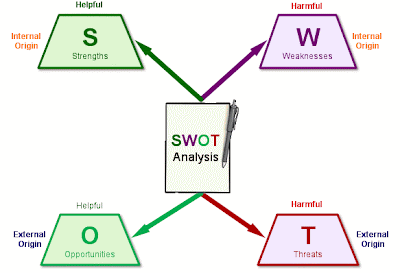Have you ever been caught off guard when answering your phone?
Even with Caller ID, I’ve immediately answered calls I should have let go to voice mail.
And, seriously, these were not calls from creditors or irate customers.
They were usually calls from prospects, clients, friends and family that caught me unprepared, without notes and calendar at hand. More likely than not, my concentration was on something completely unrelated to what was on the caller’s mind.
Even though prospects and clients were often trying to contact me for my benefit; more business, a referral, new client, etc. I felt like I was not in complete control of the situation. I often didn’t have needed information at hand. More than once, I know I sounded like an idiot. Make that a complete idiot.
The answer, as pointed out by Bob Marx in my sales class, is to let every call, unless family or someone I’ve asked to call me, go to voicemail. That doesn’t mean I won’t listen to the message right away and get back sooner, if necessary, rather than later. It does mean that I will be thoroughly prepared and focused when I call them.
The difference can be huge! I initiate the return call, and am prepared with all available information at hand, and completely focused on the prospect, client, etc. I’ve made time to collect my thoughts for the upcoming call. This gives me the best opportunity to communicate with them and give the facts, answers, or advice they were seeking.
When I contact them, (assuming they haven’t read this article!), the first thing I say is, “Sorry I missed your call. I got your message. Is this a good time to talk, or should we schedule this call for a future time and date?” This verbiage shows respect, and leaves the decision whether to talk now, or book it for later, up to the person who originally called. I don’t like being unprepared, and don’t want to catch them off guard either. This is why I put the ‘schedule for later’ option on the table. If we’re both prepared, mentally and with facts at hand, the call will produce results. That’s each party’s goal - correct?
I sometimes return calls before they expect me to, and this can have value. For instance, if the message is, “Please call before the close of business today,” and I call in two hours, I am showing (1) I listened to their request (2) I thought it important enough not to wait till the end of the day. Returning calls shows respect. Not returning calls, in my opinion, shows indifference and disrespect.
One side benefit not answering calls is the perception - I’m a busy person! Alway taking a call or returning them immediately gives the impression I’m sitting at my desk, or in my car, waiting for the next ringtone to occur. People like to deal with successful people and successful people are not usually available on a moment’s notice.
There’s another important reason not to answer all calls as soon as they come in. They interrupt, and distract from the work at hand. We can only focus on one task at a time. The ability to multi-task is a delusion. When trying to do more than one thing at a time, we actually do poorer on all tasks. Stopping to take a phone call takes a person off task. When the phone call is completed, there’s time lost on the original mission because of time spent on the call. We also don’t immediately switch gears and return to the first thing we were doing before the phone call interrupted us. We need to regroup and refocus our thoughts. This isn’t done immediately. Our concentration has been interrupted, and time is lost refocusing. Sometimes, this can be crucial. If that phone call is answered in the middle of a high concentration task, the negative impact is multiplied. It might be best to put a phone on ‘silent mode’ during these period. This will negate the temptation to look at the Caller ID every time a call comes in. (Accident statistics for driving and talking on a cell phone reinforce this fact. Please don’t drive and use your mobile.)
The bottom line is this: Return all phone calls. Return the calls that have possible high value, and those that probably don’t. Triage them by value when deciding who to call first. The ones you know are low value will probably keep calling, so they should be dispensed of properly - by returning the call.
One more suggestion before I end this commentary: Apply the same rules of not answering your phone to responding to emails and text messages. The same benefits of this work recommendation apply.
If you want to discuss this concept, give me a call. But, don’t expect me to answer!
I can be reached at: 314-517-8772 or fredmiller@mac.com
Thursday, April 1, 2010
Monday, January 4, 2010
Let Email Marketing Reach Out
To Prospects & Clients
 Why Email Marketing?
Why Email Marketing?As we all know, email has dramatically changed our daily communications with friends, family and businesses associates.
Email Marketing has done the same for businesses who want to communicate information to people who have given their permission and to clients.
With many businesses, one goal is to be 'top of mind' when prospects and clients have problems the business can remedy.
Periodic 'touches' by direct mail, phone calls, and email are all part of the process.
Email Marketing's particular advantages include the following:
- Affordable - It's a great return for the investment.
- Effective - Turns prospects into customers and customers into loyal clients.
- Immediate - It generates an instant response.
- Measurable - See who is opening your emails and what links they click on and what date and time the do it.
- Easy - Professional services provide templates and step-by-step instructions that make professional results possible without lots of work.
- Flexible - Use it to announce new products and services, new blog posting, drive traffic to your website.
- Join Our Email List Signup Boxes can be put on your web page.
- The Visitor Sign up Form can be customized to your specifications. For instance, if you offer several products and services, they can be listed with check boxes so you can customize your marketing. Also, site visitor details can be selected and captured on the form.
- Welcome Email Letters can be customized and sent to new contacts who signup using your visitor signup form.
- Change of Interest Emails can be automated when a contact makes changes to their interests or profile.
- Subscriber Reports can have their frequency automated.
- Web Based means they can be accessed and worked on from any terminal, anywhere.
Interested?
Take a 60 Day FREE Trial
and see if it fits Your Marketing!
Wednesday, December 9, 2009
Monday, November 30, 2009
Prospecting Vs. Selling:
Find a 'Thirsty Horse'!

Kim DeMotte's 'Catch & Release' Process is the Gold Standard for Prospecting.
He makes the important point that there is a distinct difference between Prospecting and Selling.
Prospecting is sorting and sifting.
Selling is influencing.
Ideally, the two should be separate functions, done by different people.
The Prospecting should be a quick filtering process that easily determines if the Suspect has a need for your product and service, and more importantly, realizes it.
Once these individuals are found, a salesperson can call to see if the product or service they offer is a fit for the prospect and if it will solve their problem.
Ralph Blakey gave this analogy:
"I never thought it made sense to go into a grassy field, find a horse, put an arm around their neck and drag them to a water trough next to a fence, and push the horse's face into the water.
Doesn't it make more sense to find a Thirsty Horse?"
Tele-Prospect Filtering finds those Thirsty Horses.
Sunday, November 29, 2009
Monday, November 9, 2009
Target Your Prospects:
Defining a Prospect List
 Prospect Lists can be very effective in your marketing efforts.
Prospect Lists can be very effective in your marketing efforts.Even if you don't purchase a list, the exercise for defining your target market will be invaluable!
Two important rules for defining such a list:
1. Define as specifically as possible what you want.
2. Define as specifically as possible what you don't want.
Here are the Steps:
- Choose the SIC Codes (Standard Industrial Classifications) that best describe your Target Market.
These codes are a way of classifying businesses to provide new comparability in statistics about business activity across North America.
Here is a great site from the US Department of Labor to use for this purpose.
Important: Many of these codes go several layers deep. Going through the layers of each code is an important part of the filtering process needed to specifically target prospects who meet your criteria.
There are Divisions, Major Groups, and Industrial Groups with explanations for all.
- Filter by Data Elements; i.e. number of employees, annual sales, square footage, etc.
Example: Janitorial Services might be interested in square footage.
Too little space may not be worth their while, and too much space could be a competitive bidding war they might also want to pass on.
- Define the geographic area of your prospects.
This might be nationwide, regional, state, zip code or a mileage range from a particular zip code.
- The List Broker will then come back to you with a 'Count' of how many records meet the criteria you have specifically filtered for.
- Purchase the number of records you needed based upon budget, price breaks, and specific needs.
Friday, November 6, 2009
SWOT Analysis
Strengths • Weaknesses • Opportunities • Threats
Discover New Opportunities.
Manage and Eliminate Threats.
SWOT Analysis is a powerful technique for understanding your Strengths and Weaknesses, and for looking at the Opportunities and Threats you face.

I use a powerful tool, Mind Mapping, to achieve the maximum results.
What makes SWOT particularly powerful is that, with a little thought, it can help you uncover opportunities that you are well placed to exploit. And by understanding the weaknesses of your business, you can manage and eliminate threats that would otherwise catch you unawares.
More than this, by looking at yourself and your competitors using the SWOT framework, you can start to craft a strategy that helps you distinguish yourself from your competitors, so that you can compete successfully in your market.
(Explanation for SWOT credit: Mindtools: James Manktelow & Amy Carlson)
Manage and Eliminate Threats.
SWOT Analysis is a powerful technique for understanding your Strengths and Weaknesses, and for looking at the Opportunities and Threats you face.

I use a powerful tool, Mind Mapping, to achieve the maximum results.
What makes SWOT particularly powerful is that, with a little thought, it can help you uncover opportunities that you are well placed to exploit. And by understanding the weaknesses of your business, you can manage and eliminate threats that would otherwise catch you unawares.
More than this, by looking at yourself and your competitors using the SWOT framework, you can start to craft a strategy that helps you distinguish yourself from your competitors, so that you can compete successfully in your market.
(Explanation for SWOT credit: Mindtools: James Manktelow & Amy Carlson)
Subscribe to:
Comments (Atom)



